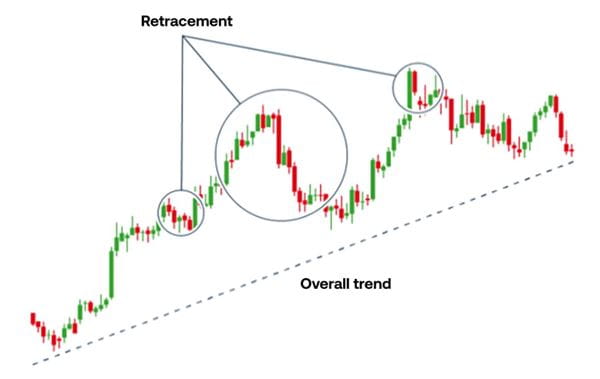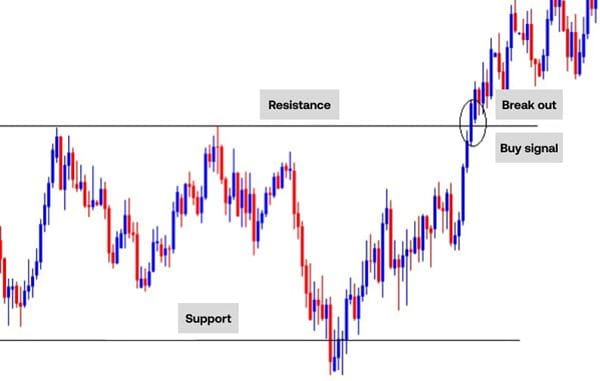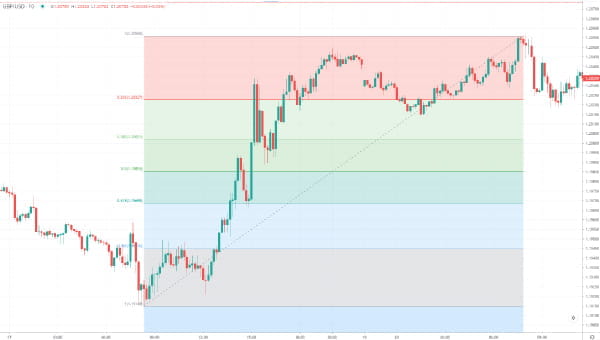
Position trading is a common style for traders due to its similarities to investing. Find out how to take a long-term view of markets with position trading strategies.
What is position trading?
Position trading is a style that seeks to identify an ongoing trend and benefit from the majority of that movement. Position traders ignore short-term volatility and focus on longer-term price action.
They wait for a trend to reach its peak before closing their trade. Whether this happens after weeks, months or years depends on the trend in question. Normally the style only involves opening a few positions each quarter.
Holding positions open longer opens traders up to more risk of adverse movements, but also the potential for larger gains.
Day trading vs position trading
Day trading is widely considered to be the opposite style of position trading. While position traders open a position for the long term, day traders will only ever hold a position open for a single session.
Position traders tend to only have a few trades open at any time, while day traders will have multiple smaller trades running.
Learn more about day trading
Is position trading the same as investing?
No, position trading is not the same as investing, although it shares some of the same characteristics.
The main difference is that position traders don’t just buy and hold. They can also go short, believing there will be a prolonged downturn in a market price. This is why most position traders tend to use derivatives, such as CFDs, to give them this flexibility.
But there’s nothing to say a position trader can’t utilise investment vehicles as part of their strategy too.
Position trading example
Let’s say an OPEC meeting has just happened in which the organisation announced its intention to cut oil output over the coming months. In theory, the oil price would rise as the decline in supply would create an imbalance against global demand.
A position trader would take a long position on oil futures or even oil company stocks that might see increased profits as the commodity increases in value over the long term. They’d exit the trade when news breaks that changes the outlook.
This contrasts with a day trader, who would aim to trade the immediate reaction following the meeting and only hold the trade for a few hours until the market settles.
How to be a successful position trader
To be a successful position trader, you need to:
- Build a trading plan
Your trading plan should govern how and when you’ll trade. It’s a set of rules and goals that will help you be more rational in your approach, and avoid trading based on emotions. In the plan, you should outline how many trades you want to place over a given period, your entry and exit rules, and how much time you’ll spend monitoring markets
- Do your research
As a position trader, you’ll be looking at longer-term outlooks for each market, which will primarily be driven by fundamental factors – such as company earnings, macroeconomic data releases and breaking news. So, keeping up to date on the latest analysis is vital to understanding the bigger picture for your chosen instrument.
- Understand technical analysis
Technical analysis is the use of indicators and historical price data to find trends and patterns. Although position trading is a longer-term style, it still requires an understanding of technical indicators and price action to find the best entry and exit points for each trade
- Manage your risk
Whichever style of trading you implement – whether that’s position, day, swing or scalping – it’s important to manage your risk of loss. This is especially the case if you’re trading using leveraged instruments, such as CFDs. The most common way of doing so is by attaching stops and limits to your trades, which automatically close your position at a predetermined level
3 best position trading strategies
The best strategies for position trading include:
- Trend trading
- Breakout trading
- Pullback trading
Let’s look at each in more detail.
Trend trading strategy
Position traders are trend followers. Every position trader will subscribe to the belief that once a trend starts, it is likely to continue until market sentiment changes. So, pretty much every position trading strategy is at its core a trend trading strategy.

In trend trading, you’re looking to find an entry point as early in a trend as possible and take an exit after a certain level of profit has been achieved. Most of these strategies are based on fundamental factors, but indicators can help identify the start and end of a given trend through momentum, volume and price action.
Common trend trading indicators are moving averages and the relative strength index.
Discover the best indicators for any trading strategy
Breakout trading strategy
Breakout trading is another common strategy for positional traders. It involves identifying an area of support or resistance in a market, and assessing whether there is enough momentum behind the current trend to push through the level.
Once a support or resistance is broken, it’s likely the trend will continue in the same direction for some time before reversing. So, if a position trader can find these price points, they can open a trade at the beginning of a significant price movement.
The most common indicators and tools are those that can help identify support and resistance levels, which are typically trend line tools or momentum and volume indicators. Popular examples include Fibonacci retracements, the Ichimoku cloud and the MACD.

A breakout position trader might use stop-entry orders to automate this strategy. Say a known area of resistance for Company ABC was at £100. A trader could place an order to enter the market at £101 so that if the £100 is broken, their position would be executed as early on in the move as possible.
Pullback position trading strategy
A pullback – or retracement – is the term for the smaller market movements that move in the opposite direction from a wider trend.
Usually, when a pullback occurs, it’s seen as a period of ‘rest’ for the market before the trend continues again. So, although the movements themselves are largely ignored by position traders who hold existing trades, they can provide key entry points for anyone looking to enter a market.
The most common way of identifying pullbacks – and ensuring they’re not full-blown reversals – is using Fibonacci retracements.

In this example, we see that EUR/GBP is in a bearish run. Although the price starts to rebound, it hits a Fibonacci level and continues to fall again – indicating the temporary bullish bounce was just a retracement, not a reversal. Had the market moved through the Fibonacci level, it could’ve indicated a stronger price action was underway.
Which instruments are best for position trading?
Most position traders will focus on shares, indices or commodities, which follow longer-term trends. You can use a position trading style on most instruments; however, some markets are better suited than others.
Can you use a position trading strategy for shares?
Yes, position trading is very popular among share traders because it’s similar to investing.
The stock market tends to follow a trend for an extended period. Although there are periods of volatility following events such as news announcements and company earnings, on the whole, the value of a company is based on fundamentals that shouldn’t change dramatically overnight.
Position traders can take a view on the longer-term outlook of a company – say over months or even years – based on analysis of earnings, management and sector news.
Can you use a position trading strategy for indices?
Indices are based on groupings of stocks – usually based on market capitalisation, geographical areas or sectors – so like individual company shares, are ideal for position traders. They tend to exhibit less volatility than other markets and have longer-term trends that are easier for position traders to identify.
Can you use a position trading strategy for commodities?
Yes, commodities are closely linked to economic health, so move in overarching trends. As countries go through periods of growth, they require more natural resources and individuals can afford to spend more – boosting demand for goods. And in periods of downturn, the demand for commodities falls, lowering their price on international markets.
Position traders can follow the cycles of booms and busts and get indications of future outlooks from macroeconomic data releases and industry-specific news.
Can you use a position trading strategy for forex?
Forex is generally the least used instrument for position traders, given the constant volatility the market experiences. It’s favoured by shorter-term traders, such as scalpers, who want to find opportunities for quick but regular profits.
Pros and cons of position trading
|
Pros |
Cons |
|
Longer-term positions are less impacted by volatility risk as the focus is the larger trend |
Holding a position open for a longer period requires more capital |
|
The combination of fundament and technical analysis gives a broader overview than one method alone |
The initial analysis can be time consuming and requires two different skill sets instead of one |
|
Less time is required, as positions can just be left to run, while orders can be used to automate your entry and exit |
Capital is locked up in each position for a significant amount of time, which can impact liquidity |
|
While investors can only take a long view of markets, position traders can go short too |
While short-term traders can also find opportunities in range-bound markets, position traders need trending market |
|
Leverage means traders can open a position with just a fraction of the capital that investing would require |
Leverage magnifies your risk of loss. While you only need a small initial deposit, your profit and loss are calculated off the full market exposure |
Is position trading right for me?
Position trading might be the right style for you if you’re:
- Patient and less excitable
- Capable of taking on higher risks
- Not able to spend all day monitoring markets
- Interested in larger trends, not volatility
Position trading FAQs
What is a position trader?
A position trader is someone who subscribes to a longer-term outlook on financial markets. They typically hold a trade for several weeks, months or even a year, rather than day traders who only let trades run for seconds, minutes or hours.
Learn about trading strategies and styles
Is position trading suitable for beginners?
Many beginners will use position trading as it’s similar to investing. While trading with derivatives, such as CFDs, is more complex, the familiarity of position trading can be beneficial as the leap in terms of knowledge and time requirement is less than other styles.
Learn how to trade CFDs









